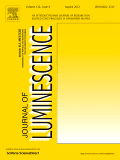
Journal of Luminescence
Scope & Guideline
Illuminating the Frontiers of Science
Introduction
Aims and Scopes
- Synthesis and Characterization of Luminescent Materials:
The journal publishes studies that detail novel methods for synthesizing luminescent materials, including phosphors and quantum dots, highlighting their structural and optical properties. - Applications of Luminescent Materials:
Research articles often explore the applications of luminescent materials in fields such as solid-state lighting, displays, and biological imaging, showcasing their practical utility. - Thermal and Optical Properties:
A significant focus is placed on the thermal stability and optical properties of luminescent materials, including their behavior under various environmental conditions. - Energy Transfer Mechanisms:
Papers frequently discuss the energy transfer processes within luminescent systems, particularly in co-doped materials, elucidating the underlying mechanisms that enhance luminescence. - Theoretical and Computational Studies:
The journal features theoretical studies that provide insights into the electronic structures and mechanisms of luminescence, often employing computational methods to predict material behavior. - Novel Photonic Devices:
Research on the integration of luminescent materials into innovative photonic devices, such as light-emitting diodes (LEDs) and lasers, is a core area of focus.
Trending and Emerging
- Green and Sustainable Luminescent Materials:
There is a rising trend towards the development of eco-friendly luminescent materials, particularly those derived from natural sources or designed for sustainable applications. - Nanostructured and Hybrid Materials:
Research increasingly focuses on nanostructured and hybrid luminescent materials, which offer superior properties and versatility compared to traditional materials. - Multifunctional Luminescent Systems:
Emerging papers emphasize multifunctional systems that combine luminescence with other properties, such as sensing, energy storage, or photothermal conversion. - Bioluminescent and Bioimaging Applications:
The application of luminescent materials in biomedicine, particularly for imaging and therapeutic purposes, is gaining momentum, reflecting the integration of luminescence in biological studies. - Temperature Sensing and Thermometry:
There is a notable increase in research focused on luminescence-based temperature sensing, indicating a demand for innovative thermometric materials. - Quantum Dots and Perovskite Nanocrystals:
Quantum dots and perovskite nanocrystals are increasingly featured, particularly for their tunable optical properties and applications in LEDs and solar cells.
Declining or Waning
- Traditional Inorganic Phosphors:
There has been a noticeable decrease in articles focusing solely on traditional inorganic phosphors, as the field moves towards more complex hybrid and nanostructured materials. - Basic Thermoluminescence Studies:
While thermoluminescence remains a topic of interest, papers dedicated to basic thermoluminescence studies without application-driven research are becoming less frequent, indicating a shift towards applied research. - Single-Component Luminescent Systems:
Research focusing on single-component luminescent systems is waning as there is a growing interest in multifunctional and composite materials that offer enhanced properties and applications. - Low-Temperature Phosphor Studies:
Studies exploring low-temperature phosphor behavior are less common, possibly due to the increasing focus on room-temperature applications and the practicality of materials in real-world conditions.
Similar Journals
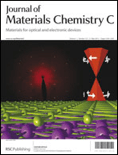
Journal of Materials Chemistry C
Transforming Ideas into Material SolutionsJournal of Materials Chemistry C, published by the renowned Royal Society of Chemistry, is a leading academic journal focusing on innovative research in the field of materials chemistry. With an impressive impact factor, this journal has solidified its status as a top-tier publication within its field, ranking in the Q1 category for both Chemistry (miscellaneous) and Materials Chemistry as of 2023. Positioned at the forefront of -materials science, it serves as a vital platform for researchers, professionals, and students to disseminate findings that highlight the synthesis, characterization, and application of advanced materials. The journal's open access model allows for broader readership and engagement, ensuring that groundbreaking research is accessible to a global audience. As a result, the Journal of Materials Chemistry C plays a crucial role in advancing the understanding and technology of materials, fostering collaboration and innovation within this dynamic scientific community.
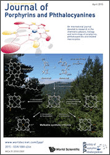
JOURNAL OF PORPHYRINS AND PHTHALOCYANINES
Advancing the Science of Light-Absorbing CompoundsJOURNAL OF PORPHYRINS AND PHTHALOCYANINES, published by WORLD SCIENTIFIC PUBL CO PTE LTD, is an influential peer-reviewed journal dedicated to advancing the field of porphyrins and phthalocyanines, key compounds in both chemistry and materials science. With an ISSN of 1088-4246 and an E-ISSN of 1099-1409, this journal has been a vital resource since its inception in 1997 and is expected to continue until 2024. The journal holds a respectable position in the academic landscape, categorized in the Q3 quartile for miscellaneous Chemistry journals and ranked #252 out of 408 in the general chemistry category according to Scopus, reflecting a growing impact in the field despite its current percentile standing at 38th. JOURNAL OF PORPHYRINS AND PHTHALOCYANINES seeks to publish original research articles, reviews, and critical studies that explore the synthesis, characterization, and applications of these versatile compounds, which play essential roles in numerous scientific disciplines, from catalysis to materials development. This journal is an indispensable platform for researchers and professionals seeking to disseminate their findings, engage with contemporary discussions, and stay informed about cutting-edge advancements in porphyrin and phthalocyanine research.

GLASS PHYSICS AND CHEMISTRY
Elevating knowledge in glass physics and chemistry.GLASS PHYSICS AND CHEMISTRY, published by PLEIADES PUBLISHING INC, serves as a critical platform for advancing knowledge in the fields of glass science, materials chemistry, and condensed matter physics. With a history spanning from 1996 to 2024, this journal has consistently contributed to the understanding and innovation surrounding glass materials, their properties, and applications. Despite its current Q4 categorization in several areas, the journal aims to elevate research quality and engagement, catering to researchers, professionals, and students alike. Although it does not currently offer open access, the journal encompasses peer-reviewed articles, fostering rigorous academic discourse and collaboration. With the perspective of enhancing its visibility and impact, GLASS PHYSICS AND CHEMISTRY plays an essential role in bridging theoretical insights and practical applications, ultimately addressing the evolving challenges in materials science.
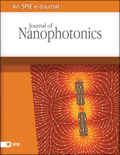
Journal of Nanophotonics
Bridging Science and Technology in NanophotonicsThe Journal of Nanophotonics, published by SPIE-SOC Photo-Optical Instrumentation Engineers, is an esteemed platform dedicated to advancing the field of nanotechnology through pioneering research in photonics. Since its inception in 2007, this journal has become instrumental in disseminating innovative findings and fostering collaborative discussions, especially in the domains of Condensed Matter Physics, Electronic, Optical and Magnetic Materials, and Nanoscience and Nanotechnology. Currently ranked within the Q3 category across these fields, it serves as a vital resource for academics, industry professionals, and students keen on exploring the multifaceted applications and implications of nanophotonic technologies. With its convergence set to continue until 2024, the journal offers a non-open-access model, ensuring rigorous peer-review standards and high-quality publications that contribute to the global body of knowledge.

ChemPhotoChem
Exploring the Frontiers of Photochemical ResearchChemPhotoChem is a premier journal published by WILEY-V C H VERLAG GMBH based in Germany, dedicated to advancing the fields of chemistry and materials science through innovative research on photochemical processes. With an impressive Q1 ranking in the categories of Analytical Chemistry, Organic Chemistry, and Physical and Theoretical Chemistry as of 2023, this journal serves as a vital platform for researchers and professionals seeking to disseminate groundbreaking findings within these critical domains. Though not an open-access publication, ChemPhotoChem ensures comprehensive accessibility via subscription models, thus providing robust support to the academic community. With its inception in 2017 and continuing through 2024, the journal fosters interdisciplinary collaboration and promotes high-quality scholarship that addresses both fundamental and applied aspects of photochemistry. Whether you're a seasoned researcher or an emerging scholar, ChemPhotoChem stands as an essential resource for understanding the transformative impact of light on chemical processes.

PHYSICS OF THE SOLID STATE
Illuminating the Path of Interdisciplinary ResearchPhysics of the Solid State is a distinguished journal published by Pleiades Publishing Inc., focusing on the rapid advancements and fundamental research in the realms of condensed matter physics, electronic, optical, and magnetic materials. With an ISSN of 1063-7834 and an E-ISSN of 1090-6460, this journal serves as a crucial platform for disseminating high-quality research findings, insights, and reviews essential for both academic and industrial professionals in the field. As of 2023, its Scopus ranking places it in the 26th percentile for both Condensed Matter Physics and Electronic, Optical and Magnetic Materials, reflecting its evolving influence and contribution to the scientific community. Although currently classified in the Q4 quartile, the journal aims to foster interdisciplinary dialogue, improve research visibility, and enhance its impact on contemporary scientific challenges through rigorous peer-reviewed articles and focused special issues. Despite its traditional model of access, it continues to play a pivotal role in engaging researchers and fostering innovation in solid-state physics.
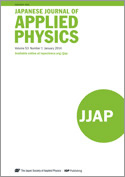
JAPANESE JOURNAL OF APPLIED PHYSICS
Bridging Theory and Practice in PhysicsThe Japanese Journal of Applied Physics is a premier publication in the field of applied physics, offering a platform for researchers and professionals to present their findings and innovations. Published by IOP Publishing Ltd, this esteemed journal has been active since 1963 and continues to contribute significantly to the understanding and advancement of applied physics across diverse applications. The journal is recognized for its rigorous peer-review process and high-quality publications, evidenced by its 2023 ranking of Q2 in Engineering (Miscellaneous) and Q3 in Physics and Astronomy (Miscellaneous). With an accessible ISSN of 0021-4922 and E-ISSN 1347-4065, the journal cultivates a global readership, fostering collaboration and innovation within the scientific community. Although the journal does not currently offer open access options, its valuable insights into the latest technological advancements and theoretical developments remain crucial for students, researchers, and industry professionals alike. By bridging the gap between fundamental physics and practical applications, the Japanese Journal of Applied Physics plays a vital role in shaping the future of applied sciences in Japan and beyond.
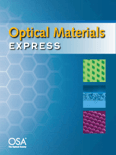
Optical Materials Express
Connecting global scholars in optical materials innovation.Optical Materials Express is a leading open-access journal dedicated to the rapid dissemination of research in the field of optical materials, published by the esteemed Optica Publishing Group. Since its inception in 2012, the journal has played a pivotal role in advancing knowledge and innovation in Electronic, Optical, and Magnetic Materials, currently maintaining a commendable Q2 classification in the 2023 category rankings. With a Scopus rank of 86 out of 284 in its category, the journal proudly boasts a 69th percentile positioning, underscoring its impact and relevance within the scientific community. The journal publishes high-quality, peer-reviewed articles that explore both fundamental and applied aspects of optical materials, making it an essential resource for researchers, professionals, and students alike. Located in Washington, DC, and accessible to a global audience, Optical Materials Express continues to foster collaboration and innovation among scholars in this vibrant field.

Physics and Chemistry of Solid State
Connecting Researchers to Shape the Future of Solid-State StudiesPhysics and Chemistry of Solid State is a distinguished open access journal published by Vasyl Stefanyk Precarpathian National University in Ukraine, dedicated to advancing research in the fields of condensed matter physics, materials science, and physical and theoretical chemistry. Since its inception in 2000, the journal has provided a platform for the dissemination of innovative ideas and original research findings, contributing significantly to the global scientific community. With a variety of access options, it facilitates the sharing of knowledge and collaboration among researchers worldwide. The journal has garnered recognition with respectable rankings in Scopus, positioning itself among the significant publications in its domain, particularly noted for its contributions to materials science and condensed matter physics. As it moves through its converged years from 2018 to 2024, Physics and Chemistry of Solid State aims to foster interdisciplinary dialogue and prepare the next generation of scientists to tackle complex challenges in solid-state research.
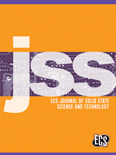
ECS Journal of Solid State Science and Technology
Bridging Theory and Application in Materials ScienceECS Journal of Solid State Science and Technology, published by the Electrochemical Society, is a prominent journal dedicated to the advancement of research in the field of electronic, optical, and magnetic materials. With an ISSN of 2162-8769 and an E-ISSN of 2162-8777, this journal has established a significant presence since its inception in 2012, spanning critical developments in solid-state science that are essential for innovative technologies. Operating within the United States and recognized for its global outreach, it holds a respectable Q3 category ranking in the materials science category as of 2023, reflecting its commitment to high-quality research and its role in bridging theoretical and applied aspects of materials science. Researchers, professionals, and students alike will find vital information and cutting-edge studies that further the understanding and applications of solid-state technologies. The journal is accessible to an extensive audience, making it an invaluable resource for those engaged in the ever-evolving landscape of materials science.